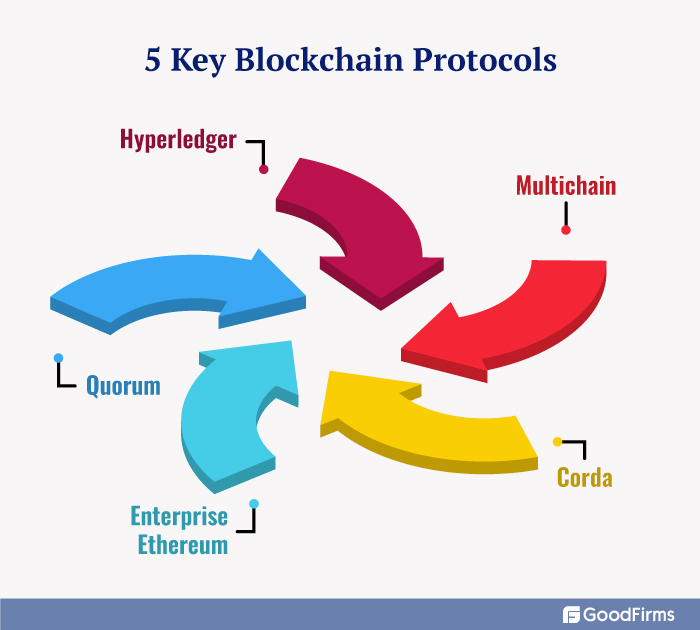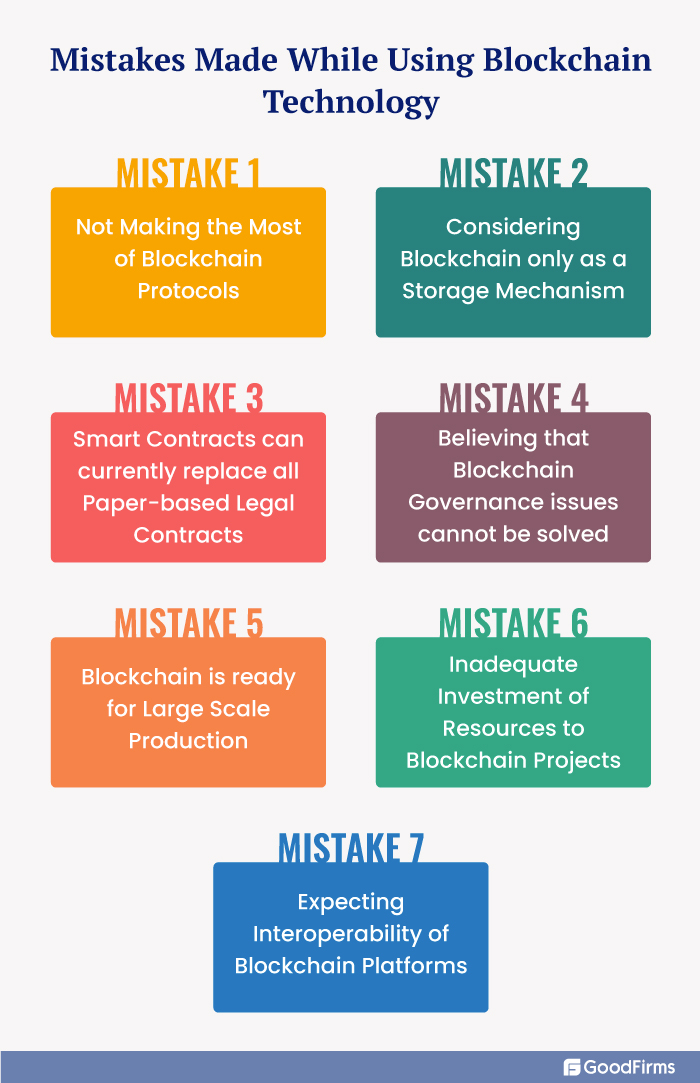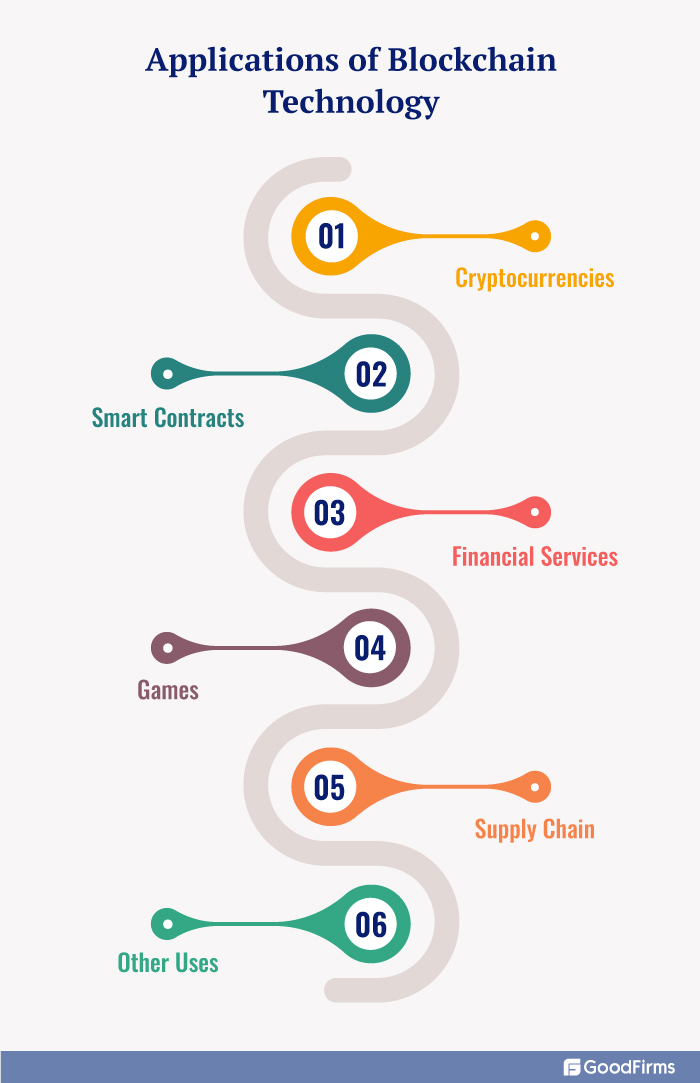Blockchain, which is also known as Distributed Ledger Technology (DLT), makes the record of any digital asset transparent and unalterable. The technology uses a decentralized network and cryptographic hashing. It is considered a revolutionary technology as it reduces security risks and brings transparency in a scalable manner. It was first brought into the limelight with a cryptocurrency called Bitcoins, but it can be applied in diverse domains.
Today, Blockchain technology is used in supply chain management, healthcare, data management, and law enforcement.
In other words, blockchain technology is here to stay and will increasingly be adopted by several organizations across the globe. The use of Blockchain technology has taken security and transparency in operations to an unprecedented level. As a result, businesses are hiring top blockchain development companies in the UK to utilize the technology for increasing productivity and improving customer service.
However, there are some misconceptions regarding the technology and its uses. In this blog, we will discuss the 7 most common mistakes made while using Blockchain technology.
How Does Blockchain Technology Work?
There are three important concepts for proof-of-work blockchains: blocks, nodes, and miners.
Block: Every chain consists of several blocks, and each block has three basic elements, which include Data in the block, nonce, and hash. Nonce, which stands for “number used only once,” is randomly generated when a block is created. A Hash is a number permanently attached to the nonce.
Nonce generates the cryptographic hash when the first block of a chain is created. Data in the block is considered signed and remains tied to the nonce and hash unless it is mined. A miner creates new blocks on the blockchain via a process called mining. As every block has its own unique nonce, hash, and references the hash of the previous block in the chain, it is very difficult to mine a block, especially on large chains.
Miners make use of specialized software to solve the complex mathematical problem of finding a nonce that generates an accepted hash. The nonce is 32 bits, and the hash is 256, so there are approximately 4 billion nonce-hash combinations that must be mined before the correct one is found. When this happens, miners are said to have found the “golden nonce,” and their block is added to the chain.
Making a change to previous blocks requires re-mining not just the blocks with the change but also the blocks that came earlier. This makes it extremely difficult to manipulate blockchain technology since finding a “golden nonce” requires enormous time and computing power.
A blockchain is decentralized as no single computer or organization owns the chain. It is a distributed ledger through the nodes connected to the chain. The nodes can be any electronic device that maintains the copies of the chain and keeps the networking functioning. Every node has its own copy of the chain, and the network has to algorithmically approve any newly mined block for the chain to be updated. Each participant is allotted a unique alphanumeric identification number, which shows their transactions. Thus, the combination of public information with a system of checks and balances creates trust and security.
Applications of Blockchain Technology
- Cryptocurrencies: Bitcoins network and ethereum network are both based on Blockchain
- Smart Contracts: These are proposed contracts that get partially or fully executed when certain conditions are met.
- Financial Services: Banks are interested in using distributed ledger technology to cooperate with companies.
- Games: Bitcoins and Non-fungible Tokens (NFTs) are being used in video games for monetization.
- Supply Chain: Blockchain technology is used in Supply Chain Management.
- Other Uses: It can be used in domain name services, peer-to-peer insurance, and distributed ledgers.
Top Countries in Blockchain Development
Canada
Currently, there are over 200 blockchain companies in Canada with over 1500 workers. Toronto and Vancouver are the two cities that lead in blockchain solutions. The majority of the firms are into cryptocurrency, fintech, or consulting.
Australia
With the blockchain industry constantly evolving, the Australian ecosystem is also making rapid strides. Australia is positioning itself to take full advantage of the economic benefits associated with blockchain technology. The government is also supporting this cause by investing in Blockchain technology in Australia.
India
Blockchain technology companies in India are mostly in the banking and financial services sector. Many corporations are adopting blockchain technology to improve effectiveness and add value to their services. The government is also increasingly using blockchain technology for land records, healthcare, insurance, and other services.
Interesting Statistics on Blockchain Adoption
- Global spending on blockchain solutions was projected at USD 6.6 billion in 2021(Statista)
- Cross-border payments and settlements were the biggest use case in 2021(Statista)
- Bitcoins are the market leader in cryptocurrency in terms of price index & capitalization(Statista)
- In 2021, China was the largest owner of blockchain technology patents(Statista)
Mistakes Made While Using Blockchain Technology
There is no doubt about the increasing interest in blockchain technology and its applications. However, a large number of blockchain projects do not see the light of the day due to misconceptions regarding the technology and mistakes made by the developers. So, companies that are still experimenting with technology must watch out for these mistakes and take a proactive approach. In this blog, we discuss seven common mistakes that should be avoided at all costs.
Mistake#1 Not Making the Most of Blockchain Protocols
The primary application of blockchain in enterprises is decentralized ledger technology. However, the biggest mistake is made by ignoring other features of the blockchain like Smart Contracts, tokenization, and decentralized consensus, which are hardly used in projects. The most common reason for this is the confusion regarding protocols. Developers assume that blockchain is a comprehensive application that lets them develop solutions according to their requirements. However, it should be used as a protocol for integrating required functionalities into an application solution.

Organizations are not making use of all the features provided by Blockchain Technology, and this raises the question of whether organizations really need this technology. Before taking the decision to use Blockchain technology, professionals should carefully study possible use cases of the technology in their organization. Clarity on the objective of the Blockchain Use Case helps in a seamless transition into projects that will use a wide range of Blockchain features.
The most common reason for limited awareness of blockchain functionalities for different use cases is a lack of clarity regarding protocols. In fact, if enough people are aware of the proper protocol, the technology can be widely used in logistics and healthcare in a variety of ways.
Mistake#2 Considering Blockchain Only as a Storage Mechanism
The application of Blockchain for secure information exchange and storing records leads to many wrong beliefs. CIOs get confused between Data Base Management Systems (DBMS) and blockchain. The existing blockchain platforms cannot provide support for complex data models and do not provide assurance of high throughput or low latency. They were built to provide an immutable, authoritative, and trusted record of events among a dynamic assortment of unrelated stakeholders. The technology is not scalable yet, as each node on the peer-to-peer network receives a copy of the distributed ledger after each updation; as the chain grows, performance slows.
Blockchain does not focus on the complete “Create, read, update, delete” model. This is the major point of difference between blockchain and DBMS. CIOs should not make the mistake of considering blockchain technology as a superior alternative to traditional database management solutions. It should be seen only as a "Write-Once, Append-Many electronic ledger, and conventional DBMS may be a better option in many cases.
Mistake#3 Smart Contracts Can Currently Replace all Paper-based Legal Contracts
Smart Contract is a code that automatically executes legally relevant events and actions that are part of the agreement. The main utility of Smart Contracts is to reduce the need for trusted intermediaries, prevent fraud and reduce arbitration costs. They are commonly associated with cryptocurrencies like Bitcoin and are fundamental building blocks of Decentralized Finance (DeFi) applications. Although, at present Smart Contracts are not necessarily an agreement that has been approved by law, with some countries being an exception.
Smart contracts are the most powerful application of new blockchain technology, which add dynamic behavior to transactions. Smart Contracts can be understood as stored procedures that are linked with specific transaction records.
However, it is not a stored procedure in a centralized system but is executed by all nodes in the peer-to-peer network, which causes challenges in scalability and manageability that have not been addressed yet. The technology will undergo significant changes, so CIOs should not go for full adoption and first run small experiments.

Mistake #4 Believing that Blockchain Governance Issues Cannot be Solved
In a private Blockchain, governance is being handled by the owner of the blockchain. A supply chain consortium may have several members; the originating firm is generally in charge of onboarding, verifying financial information, and resolving disputes.
Blockchain governance issues are primarily significant on public blockchains such as Bitcoin and Ethereum. Issues related to Governance are mostly technical in nature, and the lack of focus on resolving these issues is demotivating for companies to invest in Blockchain projects.
However, governance issues can be resolved when large companies in the blockchain ecosystem take the necessary initiatives in the development of groups for establishing governance models. The collective consensus among large enterprises can help in the credibility of the governance models resulting in resolutions of Governance issues.These conflicts or governance issues can pose significant challenges to the success of a project even if the technology being used is secure and stable.
Mistake #5 Blockchain is Ready for Large Scale Production
Blockchain can have a wide array of applications across a number of diverse industries. Many of the current products in the blockchain landscape overlap with similar features, and some complement each other. Several blockchain projects are being developed by start-ups with venture funding.
A major source of blockchain technology projects is open source blockchain applications, supported by communities without a single, centralized vendor. This assortment of various blockchain applications is confusing and a source of mistakes.
Another misconception is that blockchain technology is ready for production use, while the market is primarily composed of fragmented platform offerings, trying to differentiate themselves in various ways. Some of these platforms are built for confidentiality, some for tokenization or digital representation of goods or a currency, and some for universal transactions. However, most of these platforms are not good enough for large-scale production, which requires security, network management, and requisite systems.
Mistake #6 Inadequate Investment of Resources to Blockchain Projects
Enterprises make the mistake of allocating inadequate resources to Blockchain projects. This is because blockchain professionals have doubts regarding the areas in which they have to invest their resources. Lack of clarity about resources of knowledge, time, and money also creates bottlenecks. Professionals assume that blockchain projects focus on blockchain-specific programming skills.
However, the reality is that blockchain-specific programming accounts for only 10% of the total code scripted for blockchain solutions. In other words, blockchain professionals should have proficiency in comprehensive and general programming skill sets. Additionally, developers should have a thorough understanding of scripting software that can interact with the blockchain network.
At present, most blockchain professionals are looking at pseudo-experts and online resources, resulting in disastrous failures. Enterprises are also not taking action to counter the lack of resources for blockchain technology applications. As a result, blockchain projects do not have the assurance of quality that other technology projects have. Enterprises should also look for investors who can fund Blockchain projects and for professionals who would like to contribute with their technical skills.
Mistake #7 Expecting Interoperability of Blockchain Platforms
Some businesses make the mistake of assuming interoperability of blockchain technology with other blockchain solutions. While this may be possible in some cases, interoperability is still a challenge when most platforms and their protocols are being designed and developed. CIOs should not select a blockchain platform with the notion that it will interoperate with next year's technology from a different vendor.
It will take at least 2-3 years before blockchain functionalities are fully exploited and more nuances of the technology are known. When that stage is reached, it will be possible to integrate different platforms to come up with a distinct solution. However, at present, the interoperability of Blockchain technology solutions platforms is very low.
Conclusion:
Blockchain technology is far from reaching a stage where it has been substantially understood, and all its possible applications have been visualized. So, companies should avoid making these seven mistakes for the time being. They should allot more resources to understand blockchain technology and its applications, which can help improve their productivity over time. As the need for digitization of records and decentralized networks increases, blockchain technology will be one concept most looked at.
New features are coming up every day on the Blockchain horizon, and organizations are looking for an innovative landscape. Interest in Blockchain technology and its various applications shows that we have just seen the tip of the iceberg. Some bottlenecks need to be removed by technology leaders, along with an adequate allocation of resources for each project.




